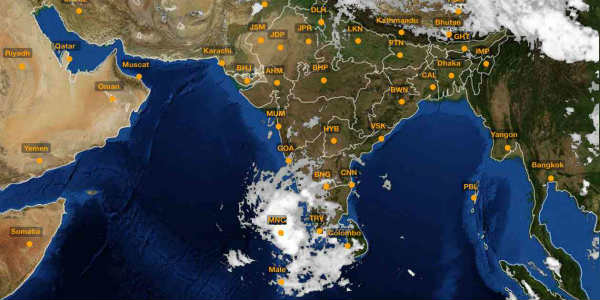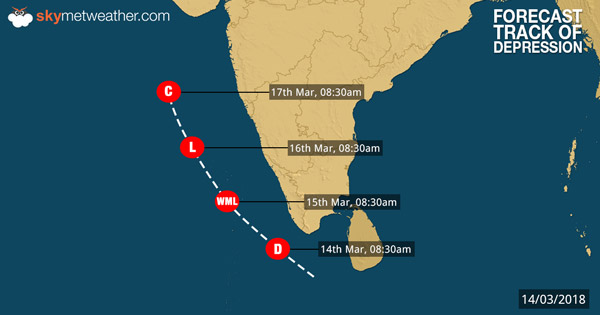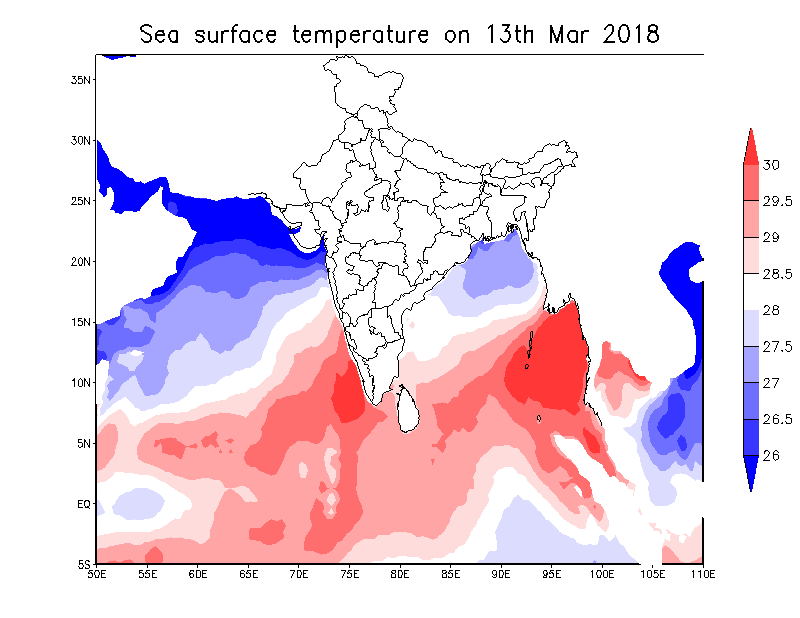
Few days back a cyclonic circulation had formed in Equatorial Indian Ocean and adjoining Bay of Bengal. The system was then showing a great growth potential and followed the same path as well during the next few days.
[yuzo_related]
The system is presently seen as a depression that is located over Southeast Arabian Sea. In span of 48 hours the system travelled all along from Bay of Bengal and Comorin area.

It became stagnant over Indian Ocean and adjoining Comorin area, wherein it gained strength and intensified first into a low pressure, then into a well-marked low pressure and finally concentrated into a depression over Southeast Arabian Sea.
The meteorologists at Skymet Weather had been closely tracking the system but at the same time they were of the view that it would not intensify beyond the strength of depression. And similar has been the case, so far. The depression has already started showing signs of weakening.
In fact, weathermen have labelled this depression a result of freak weather activity. According to the historical data, this depression is one of its kind, as we have not seen formation of a depression during March in last couple of decades.
Going by the scientific rules for strengthening of any system in the India seas, the system has to meet three criteria. Firstly, it has to travel in open waters. Secondly, sea surface temperatures (SST) have to over 26°C and thirdly, low wind shear.
All these conditions were available in the Indian Ocean, which helped the system to get more marked. It is because of these conditions only that system was able to retain the strength of depression for good 24 hours.

After moving in west- northwest direction, the system is now travelling in north-northwest direction. It is marked over Southeast Arabian Sea off the Kerala coast, around 250 km from the landmass.
With this, the system has now entered into an unfavourable zone. The proximity of land, even if it is within few hundreds of kilometers, it leads to entrainment of the weather system.
Moreover, the depression is moving in cold water as SSTs will now start falling sharply.
During March, the SSTs above 10N are cooler as compared to the SSTs below it. The warming of the oceans is governed by the movement of the sun. At present, the sun is still in south of equator, thus not aiding the intensification of the system be it in Bay of Bengal or Arabian Sea.
As and when, the sun moves into a northern hemisphere, the SSTs would also start increasing. However, this does not happen ever in March. Thus, the weather systems, if any, forming in Indian Seas during March ends in untimely death.
Any information taken from here should be credited to skymetweather.com


